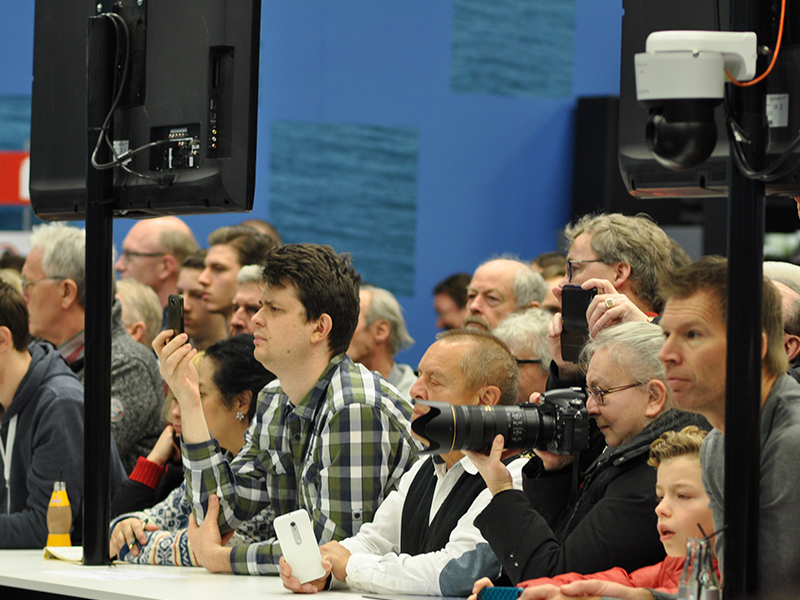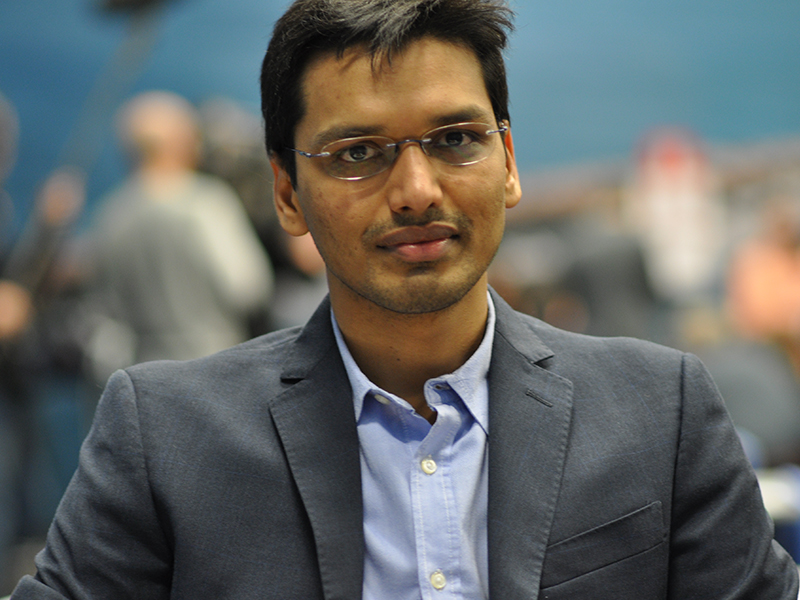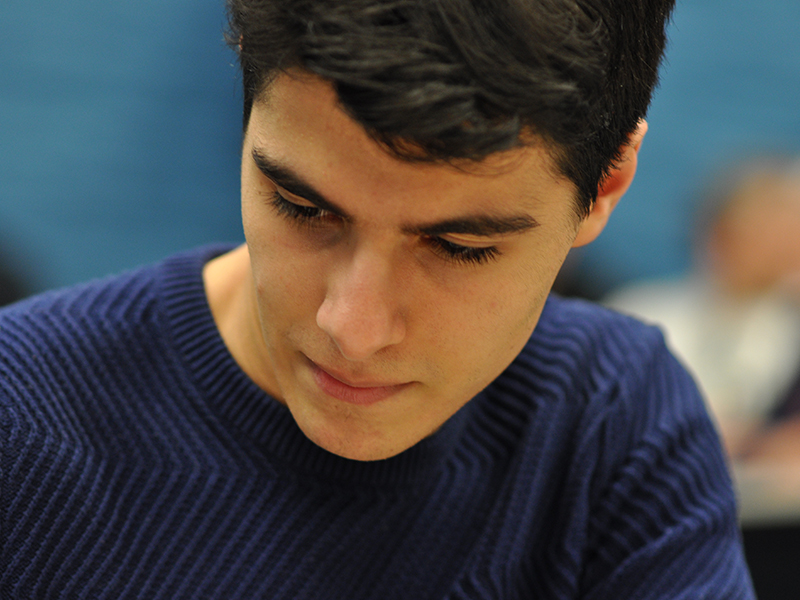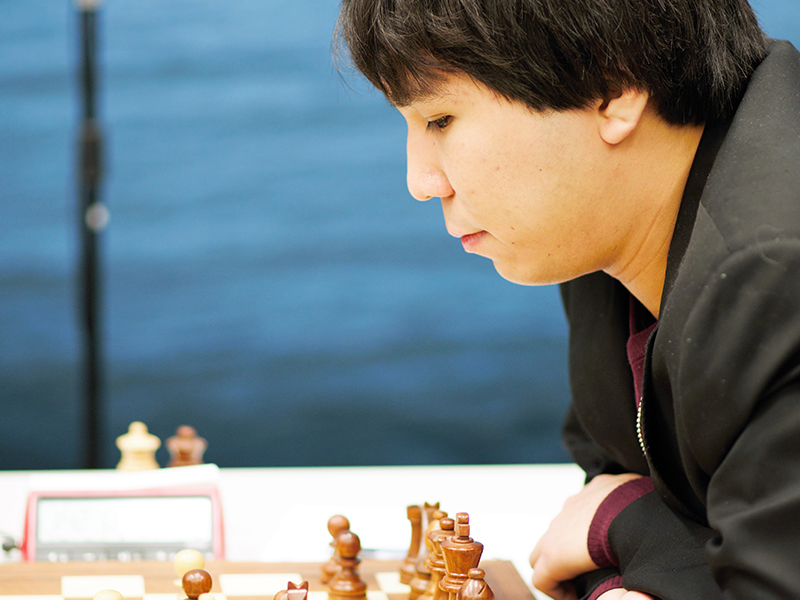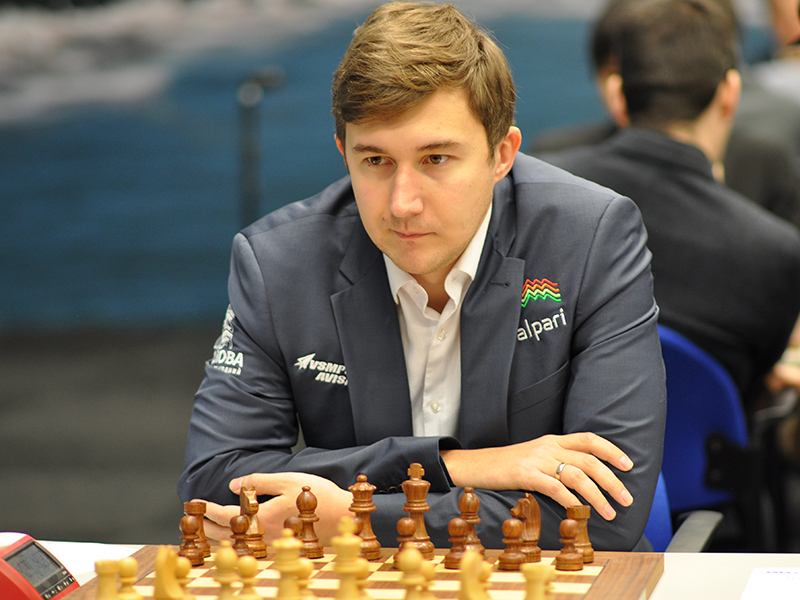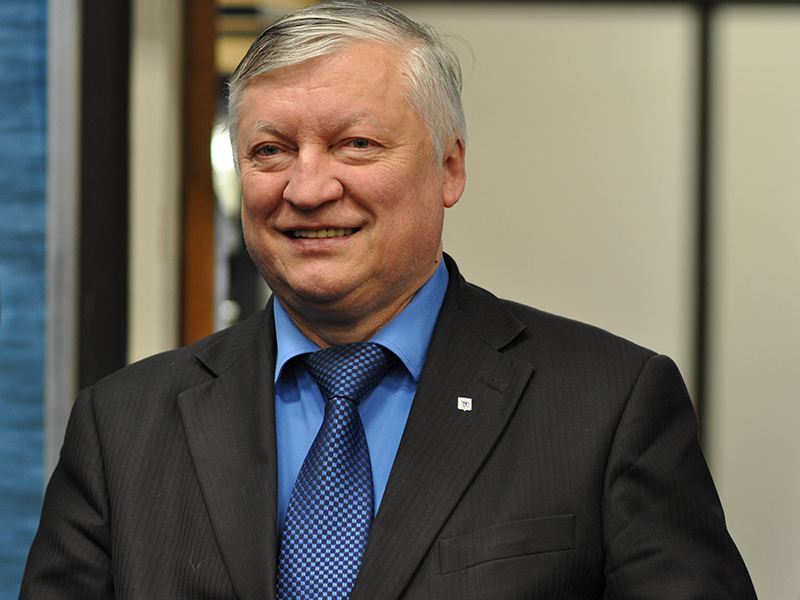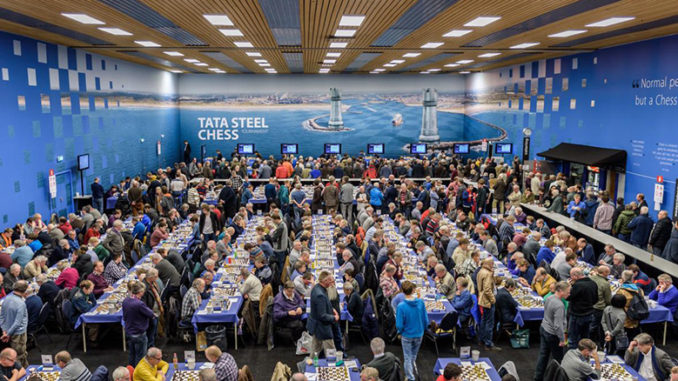
Wesley So has won the 79th edition of the Tata Steel Chess Tournament. The event concluded in Wijk aan Zee, the Netherlands on Sunday 29th January. The thirteenth and final round saw So defeat Ian Nepomniachtchi with the black pieces, exactly what he needed to do to win the event outright.
The American Grandmaster took a half point lead (over Magnus Carlsen, Levon Aronian and Yi Wei), into the final round and the victory over Nepomniachtchi meant that he could not be caught and taken to a tie-break play-off. In the end, it was slightly incidental, as in a round which saw only two draws, Wei and Aronian would both lose and Carlsen would pick up only a half point against Karjakin.
Nepomniachtchi Implodes
To say that So beat Nepomniachtchi is both an understatement and overstatement, the Russian played one of the worst games of chess I have seen at this level and was hardly in the game at all after move nine. Playing White in the Trompowsky Attack (more like the Trompowsky Kamikaze), the Russian’s 9.Qb5+{??} was a huge blunder, that So seized upon with 9…Nbd7{!!}, sensationally utterly winning.
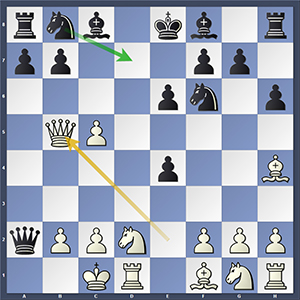
White’s problems are numerous — his precarious King position, weak c-pawn and complete lack of development sticking out like sore thumbs. Nepomniachtchi decided on 10.c6, which only worsened his situation, but it is very difficult to suggest alternatives, White’s situation is dire. 10.c6 did lead to White picking up a piece after 10…bxc6 11.Qxc6 Bb7 12.Qxb7 and perhaps this would have been alright if White’s development was better and Black was not so active, but in this case it was still losing by a mile. To worsen things further, White’s Queen was very exposed on the Queenside and this was soon being exchanged for a rook.
There is very little that can be said about the game to be honest, it was an utter disaster for White and one has to feel bad for Ian. When chess goes wrong it can go very wrong and even quality players, such as Nepomniachtchi, can have nightmares. It is a testament to Ian’s pluck and professionalism that the game lasted as long as it did, but White’s fate was sealed well before he finally resigned on move 28. The result meant that Wesley So had secured the tournament and could not be caught. Congratulations to him!

The Players End The Tournament in Fighting Mood
Last rounds in tournaments can be quiet affairs, especially when it comes to those who are not fighting for the top places. This was not the case in this round, however, with another four points being scored as well as So’s. Dmitry Andreikin got his first point of the tournament by outplaying Levon Aronian in a Slav Defence. It was a very controlled game from Andreikin and it was good that he showed a little of what he is capable of.
Also getting a point, was Radoslaw Wojtaszek, who got the better of Yi Wei with the black pieces. In an Anti-Marshall, White got the best of things out of the opening, but squandered it a bit with 26.f5{? 26.Qxe5!} and the sluggish 27.Kh2. From here, Black gradually improved his position while White seemed to struggle for ideas as to how to proceed. Meanwhile, Black was engineering a rather imposing passed pawn on the d-file.
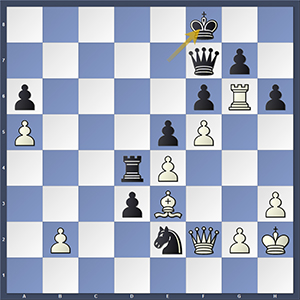
White’s fatal error came in the above position, after Black’s 59…Kf8. Necessary, here, was 60.Bxd4, leading to equality after …exd4 and White has some choices of how to hold the balance — 61.Qf3 or 61.e5, for example. However, Wei chose to play 60.Qe1 and this was far too complicit, allowing 60…Rxe4 and Black was winning. From here, Wojtaszek’s d-pawn came into its own and he netted the point quite quickly.
Dutch Grandmaster, Loek van Wely, also left it until the final round to notch up his first full point. He beat India’s Harikrishna Pentala in an Open Catalan. Black did not have the best of openings and played a little too forward with his 12…Ncb4 and 13…c5. This allowed White to seize the initiative with 14.Ne4! cxd4 15.Nxf6+ Qxf6 16.e4!
White’s position was so dominant that he exchanged rook for bishop and knight and this worked out very much in his favour. With an advanced passed pawn on d6, van Wely was soon winning, even though Pentala also had an advanced passer on the d-file. Unfortunately, this was not threatening and inadequate compensation for his investment. Outmatched on this occasion, the game was quite the rout in the end and Black’s position quickly collapsed. This will be very small comfort for Loek van Wely, however, who has had a very poor tournament and will be very disappointed that this win was so long in coming.
The other win of the round went to Baskaran Adhiban. Richard Rapport was the one surrendering the point, making it 0/2 for the Trompowsky in this round. The game started well enough, but White’s play was too aggressive and Black parried it effortlessly and ended up better. To make matters worse, grabbing a pawn on g7, left White’s knight frozen out. Sacrificing the exchange of rook for knight and pawn was really an act of desperation from Rapport and it did not work out for him in the slightest — Adhiban had the point in 41, but really the game was over for White long before.
Not Magnus Carlsen’s Tournament
Magnus Carlsen did his best against Sergey Karjakin in their highly anticipated final round game. However, in this tournament, the World Champion’s best has not quite been what we are so used to from him. Magnus has been quite lack lustre and out of sorts in Wijk aan Zee and this is very puzzling.
Of course, we can speculate, perhaps he is still hungover from the World Championship match late last year, but I am not sure about that. Also, a lot was made of the fact that Carlsen would achieve a record sixth victory in Wijk aan Zee by winning this year, did he feel the pressure and expectation? I doubt it. Personally, I think that Magnus is well able to handle these things and he is no stranger to it now. He had also stated that he had not been feeling well earlier in the tournament, but this did not seem to last long.
At the end of the day, Carlsen is a genius and probably the best player that the game has seen. However, he is also a human being and it is a human trait to go through bad spells and tough times. It is one of the things that makes human competition so interesting to follow and to try to understand. Though disappointed not to have added a record sixth Wijk aan Zee win to his tally this year, I am sure that we will see the World Champion bounce back to his usual self if not better.
The same can be said for Sergey Karjakin, who was very disappointed with his performance during this tournament. The Russian did admit to still being tired from his match against Carlsen in New York, which I must confess to being slightly surprised by.
When it came to their game, Carlsen had to win it if he wanted to have any chance at all of threatening Wesley So for first place. Therefore, he opened with the Giuoco Piano rather than the Ruy and risk a Karjakin Berlin. It signalled to all that Magnus clearly had not given up and the confirmation came very quickly. After eight moves, the game arrived at the following position.
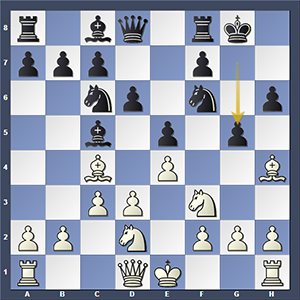
In the diagram, above, we can see that Karjakin had played 8…g5 and there is nothing out of the ordinary, here. The position had been reached before. However, Carlsen had an extremely ‘in your face’ continuation in mind and played 9.Nxg5. White picks up two pawns for the piece but it is really the positional considerations that appeals to White. With no immediate compensation, this type of sacrifice is very risky and requires vision and confidence (and sometimes a preparedness to lose) to play.
Carlsen will have been quite happy at his return for his piece, very soon picking up a third pawn and enjoying the greater influence on the position. White’s advance b4 and b5 meant that Black’s c6-knight returned back to b8. Karjakin would have liked to play …Nd7, but with the White Queen on f3 and White’s Bg5 this was ruled out. Black then became quite passive while White exuded activity, and was definitely very much better.
Then came 26…Qg6, which allowed 27.Ne7, forking Black’s Queen and rook. I thought this was a quite serious error from Black during the game, but it seems to be the best way at relieving the pressure and gaining some freedom. However, the fact that, technically, Black had given rook and three pawns for two knights must be something of an indication at how good White’s game had gone.
Frustratingly for Carlsen, Sergey Karjakin once again showed that an advantage (even a good advantage) does not necessarily mean anything, as White was unable to make progress or find any clear weakness to attack. Gradually, Black improved his position and when White gave back a rook to get rid of a Black knight, it left White with two pawns for a piece. The Russian was equal at worst and was perhaps actually slightly better. With this change in situation and Wesley So’s game with Nepomniachtchi being long over, the priority for Carlsen switched to his rating points and finding a way to draw. This did not prove difficult and the players shook hands on move 53.
The other draw of the round, was Giri-Eljanov, which lasted for sixty-three moves. White enjoyed the best of things through the game, but Giri decided that the situation in the ending was not worth pursuing and split the point.
Final Standings:
- So — 9.0
- Carlsen — 8.0
- Adhiban, Aronian, Wei — 7.5
- Karjakin, Eljanov — 7.0
- Giri — 6.5
- Harikrishna, Andreikin, Wojtaszek — 6.0
- Nepomniachtchi — 5.0
- Rapport — 4.5
- van Wely — 3.5
Jones Wins Challengers Group
The Challengers Group was won by English Grandmaster, Gawain Jones, who will be promoted to the Masters Group for next year’s tournament. Jones finished on 9/13 along with Austria’s Markus Ragger. The Challenger’s group does not have tie-break play-offs in the case of an equal score, but is settled using the following conditions: a. The mutual result; b. The Sonneborn-Berger score; c. The Player with more number of games with black; d. Drawing of lots.
Thankfully the drawing of lots (which would be an unfortunate way to settle things, I think, rather like penalty shoot-outs in football) was not needed as Jones defeated Ragger in their game in round six. As such, victory was his. Though Ragger will obviously be disappointed to miss out, 9/13 is a great finishing score in what was a fiercely competitive group. From the thirteen rounds, it produced fifty-four decisive games and only thirty-seven draws. In the final round, points went to Eric Hansen who defeated Ilia Smirin, Norway’s promising young player, Aryan Tari, got the better of Tingjie Lei, and Vladimir Dobrov showed little mercy to Sopiko Guramishvili. This left the final standings as follows:
- Jones*, Ragger — 9.0
- Xiong — 8.5
- Hansen, Lu, Smirin — 8.0
- Tari — 7.5
- l’Ami, Grandelius — 7.0
- Bok — 5.5
- Dobrov — 4.5
- van Foreest — 4.0
- Lei — 3.5
- Guramishvili — 1.5
*wins group on tie-break (mutual score vs Ragger).
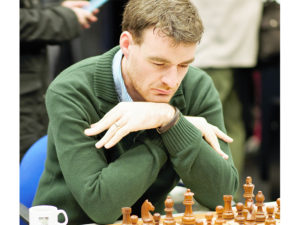
Ta-ta For Now Wijk aan Zee
As Tata Steel 2017 closes, the moment very much belongs to Wesley So, who is probably the best player in the world at the moment. Looking at So’s recent charge and results, he seems to be the man to beat. And doing so proves extremely difficult, as his fifty-six game unbeaten record shows. So said in his press conference that he has made a lot of progress, most notably becoming more consistent and this is certainly there for all to see.
Next year’s Tata Steel Chess Tournament will be a biggie, not only is it the 80th edition, but it is also Tata Steel’s 100 year anniversary. I am sure that plans are already being made as to how this can be celebrated — infact, it was alluded to during the closing ceremony. Every year, the tournament organisers manage to push things further and make the tournament that little better and I have no doubt that 2018 will see this tradition continued. As for this year, my compliments and thanks to the tournament organisers, especially its Director, Jeroen van den Berg and Press Officer’s Tom Bottema and Cora van der Zanden.
And last, but by no means least, thanks to you, dear reader, for following along with me! Hot Off The Chess has broken all records in January and especially during the tournament. Your support, feedback and patronage means so much to me that I cannot adequately express it in words. Instead, I will just say that it is extremely humbling and I hope to build upon the momentum that you have given the site and make it even better for you.

